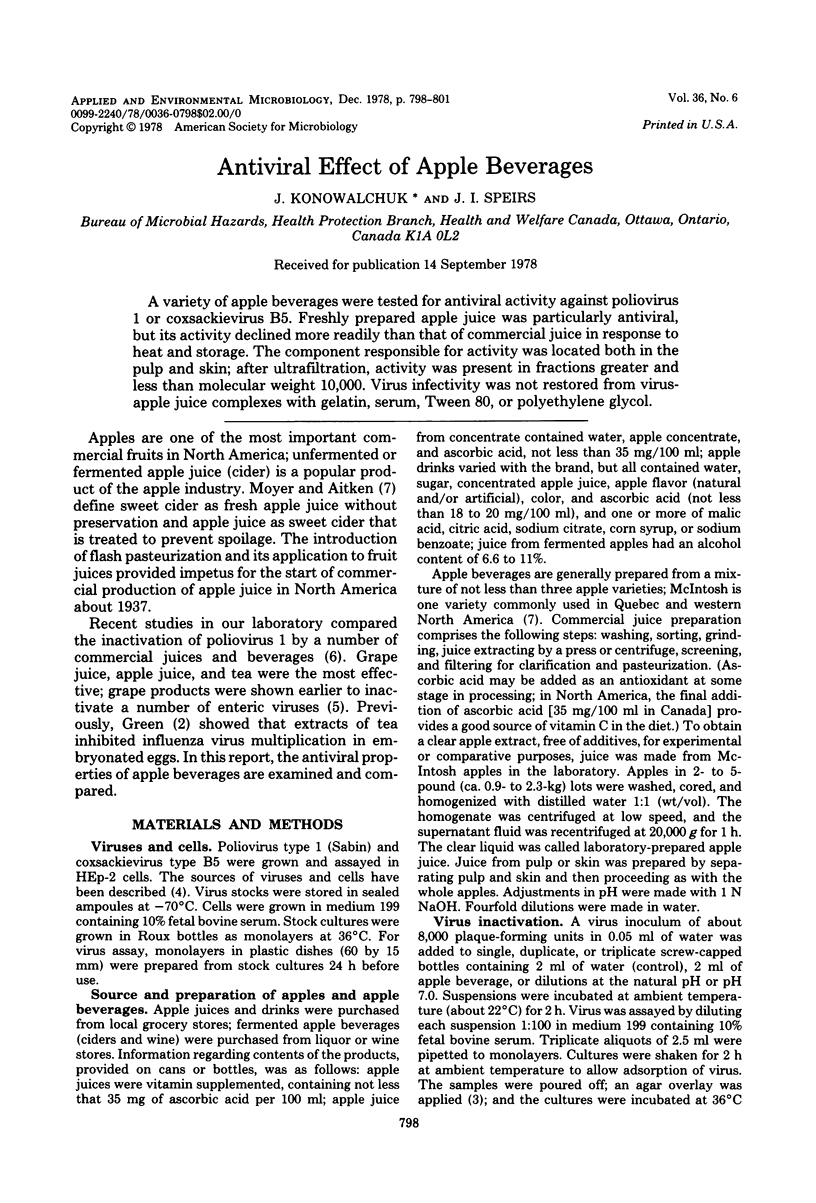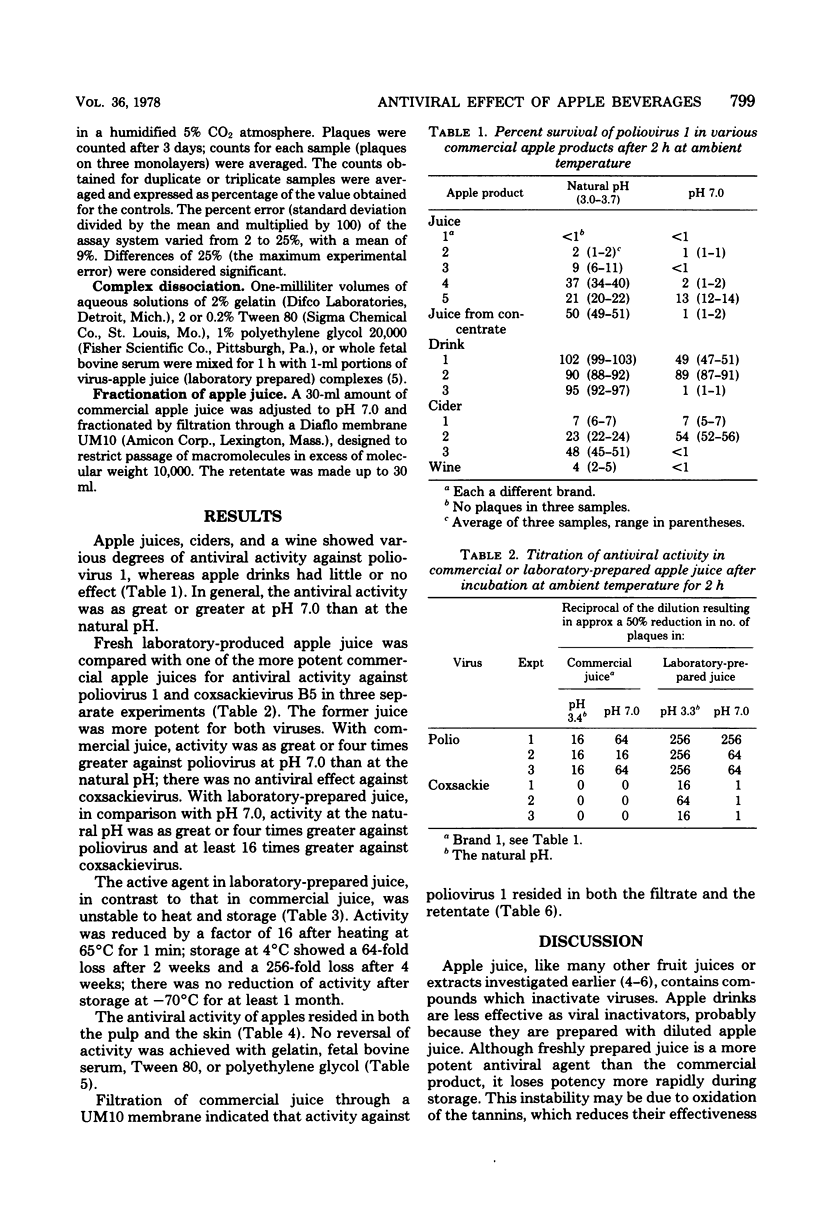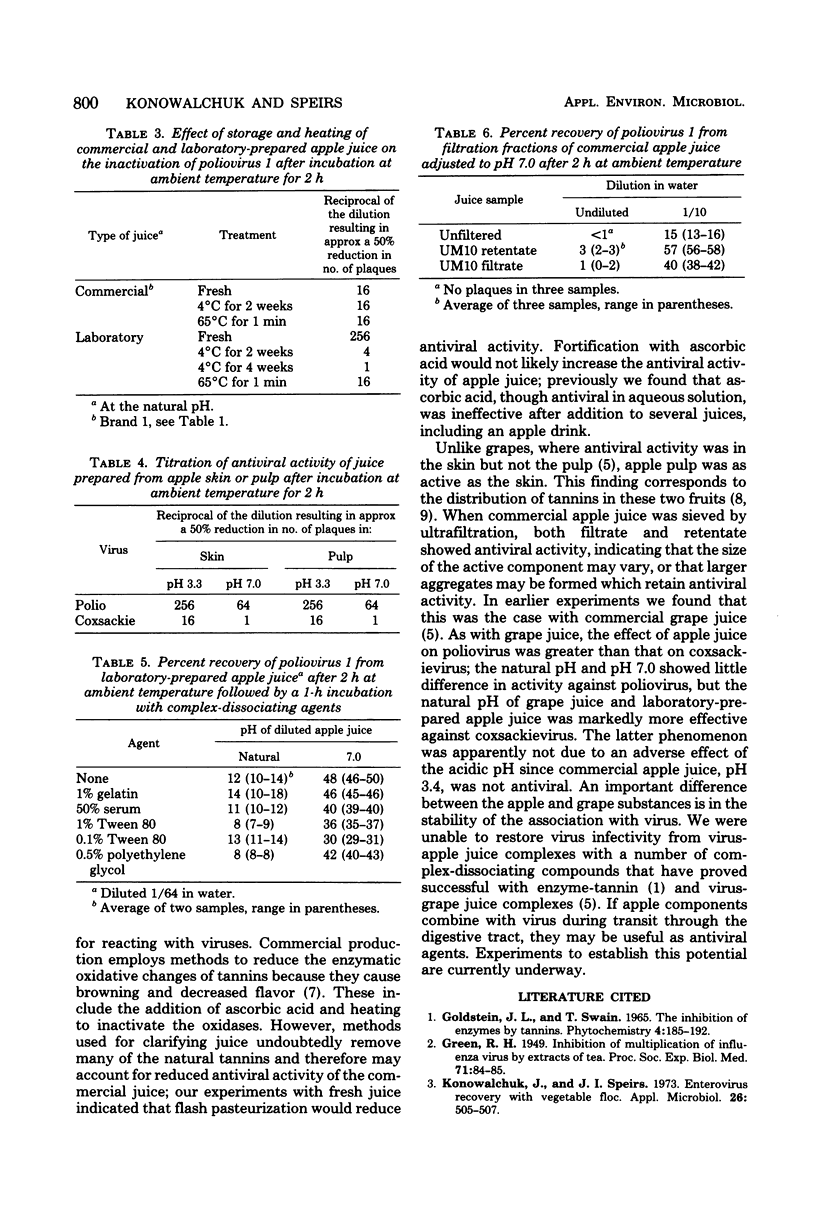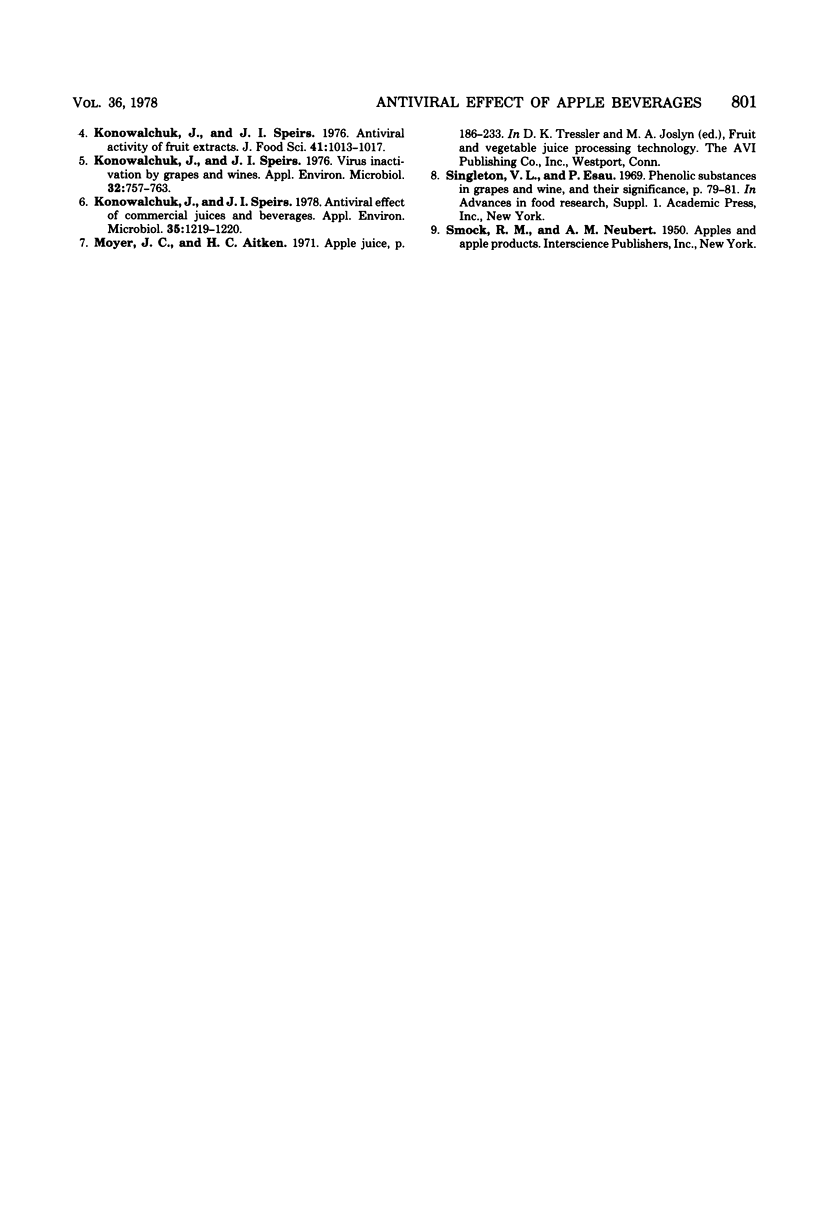Abstract
A variety of apple beverages were tested for antiviral activity against poliovirus 1 or coxsackievirus B5. Freshly prepared apple juice was particularly antiviral, but its activity declined more readily than that of commercial juice in response to heat and storage. The component responsible for activity was located both in the pulp and skin; after ultrafiltration, activity was present in fractions greater and less than molecular weight 10,000. Virus infectivity was not restored from virus-apple juice complexes with gelatin, serum, Tween 80, or polyethylene glycol.
Full text
PDF



Selected References
These references are in PubMed. This may not be the complete list of references from this article.
- Konowalchuk J., Speirs J. I. Antiviral effect of commercial juices and beverages. Appl Environ Microbiol. 1978 Jun;35(6):1219–1220. doi: 10.1128/aem.35.6.1219-1220.1978. [DOI] [PMC free article] [PubMed] [Google Scholar]
- Konowalchuk J., Speirs J. I. Enterovirus recovery with vegetable floc. Appl Microbiol. 1973 Oct;26(4):505–507. doi: 10.1128/am.26.4.505-507.1973. [DOI] [PMC free article] [PubMed] [Google Scholar]
- Konowalchuk J., Speirs J. I. Virus inactivation by grapes and wines. Appl Environ Microbiol. 1976 Dec;32(6):757–763. doi: 10.1128/aem.32.6.757-763.1976. [DOI] [PMC free article] [PubMed] [Google Scholar]


